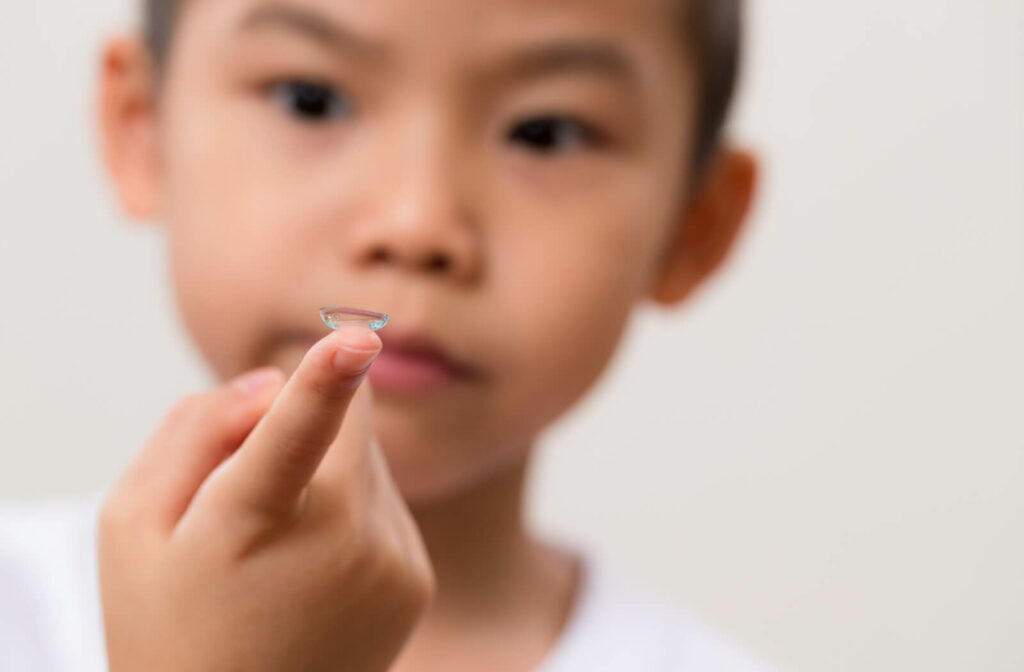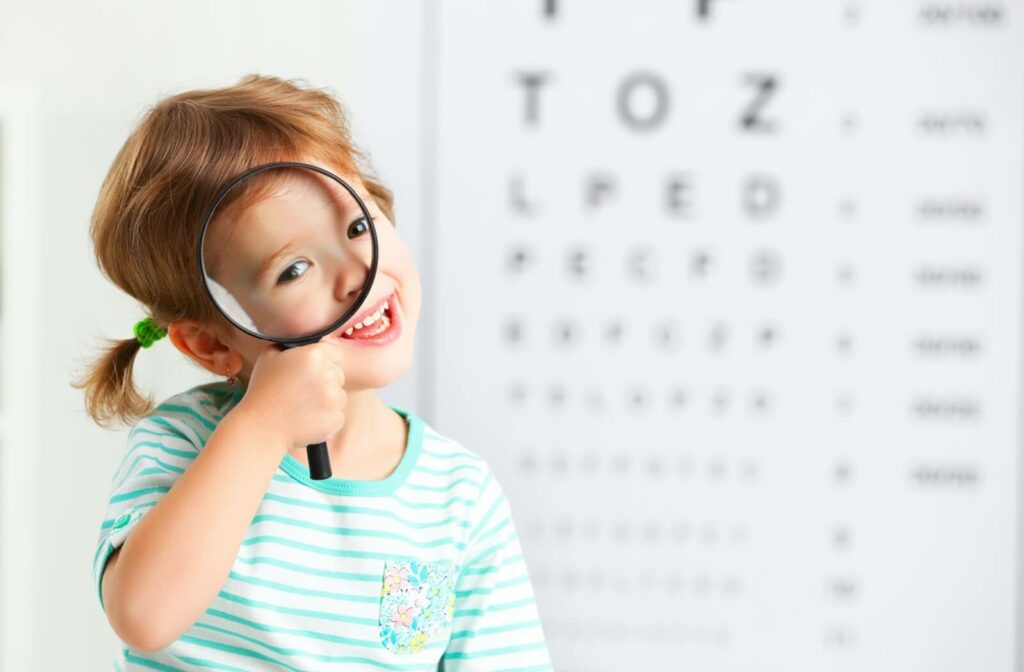Myopia, or nearsightedness, is a common eye condition that blurs your distance vision.
While glasses are a tried-and-true solution, more advanced options, such as specialty contact lenses and eye drops, are now designed to manage myopia more effectively. Effective myopia management goes beyond glasses, utilizing treatments that can slow the condition’s progression and enhance long-term eye health.
Treatment Options for Myopia
Ortho-K Lenses
Ortho-K lenses are specially designed contact lenses that help reshape the cornea while the user sleeps, providing clear vision throughout the day without needing daytime correction. They have become popular for their convenience and effectiveness in slowing down myopia progression, especially in younger patients whose eyes are still developing.
The technology behind acuity lenses is based on orthokeratology, a non-surgical corneal reshaping process that temporarily corrects vision by flattening the cornea. When used consistently, acuity lenses can slow down the rate of myopia progression by minimizing eye elongation—a critical factor in worsening myopia. Ortho-K lenses offer a reliable and innovative solution for patients looking to reduce their dependence on glasses during the day.
Some key considerations include:
- These lenses are ideal for children and adults but are especially beneficial for those with mild to moderate myopia.
- By wearing these lenses overnight, users can enjoy clearer vision each morning, with effects lasting throughout the day.
- Regular follow-up visits are essential, as the eye-care specialist will monitor eye health, lens fit, and the effectiveness of the treatment.
Users can benefit from this all-in-one solution that offers vision support while addressing myopia’s long-term implications.
MiSight Lenses
MiSight lenses are soft, daily disposable contact lenses designed specifically for myopia management in children. Here’s how they work:
- Clinically proven to slow the progression of myopia by using unique optical zones that adjust the focus of light entering the eye.
- By distributing the focus more evenly across the retina, MiSight lenses reduce eye elongation, the primary cause of myopia progression.
With MiSight, parents can feel confident that their child’s myopia is being actively managed while ensuring excellent vision throughout the day. These disposable lenses are easy for children to use and maintain because they eliminate the need for cleaning or special storage. This simplicity makes it more manageable for kids to care for their lenses, which, in turn, helps families support their child’s eye health.
Studies have shown that MiSight lenses can reduce the rate of myopia progression by up to 59% in children aged 8 to 12, offering both short—and long-term benefits. They allow children to engage in daily activities without the constraints of glasses, which can be especially appealing for active young patients.
While MiSight lenses are primarily used for younger patients, they represent a significant advancement in myopia management technology. They focus on preventive care to reduce future complications related to high myopia, making them an ideal choice for parents seeking a proactive approach to their child’s eye health.
Atropine Drops
Atropine eye drops are another possible treatment for myopia. Administered in low doses, atropine drops can slow myopia progression in children. While the exact mechanism isn’t fully understood, it is believed that atropine reduces eye elongation, a primary factor in myopia’s worsening.
This treatment is especially beneficial for young patients who may be at risk of developing high levels of myopia. Since the drops are applied only once daily, usually in the evening, they are convenient and easy to use. Atropine therapy is typically monitored closely by an eye-care professional to ensure efficacy and safety.
Multifocal Contact Lenses

Multifocal contact lenses, often used by adults for presbyopia, have also shown promise in managing myopia in children and young adults. These lenses provide multiple focal points that help reduce eye strain and slow myopia progression. Multifocal lenses can be worn throughout the day, making them a practical option for those who prefer not to wear glasses.
Eye-care specialists often recommend multifocal lenses for patients who require a daily myopia management option that is effective and easy to incorporate into daily routines.
Peripheral Defocus Contact Lenses
Peripheral defocus contact lenses are another promising option. They are designed to create specific focus zones on the periphery of the retina. This focus shift discourages the eye from elongating, a major contributor to myopia progression. These lenses are worn during the day and are suitable for both children and adults.
Peripheral defocus lenses provide an advanced approach for patients looking to manage their myopia proactively while maintaining their daily activities without glasses.
What Causes Myopia?
Myopia occurs when the eye grows too long from front to back, resulting in light focusing in front of the retina instead of directly on it. This leads to blurred vision when looking at distant objects. Both genetic and environmental factors, such as prolonged close-range work and limited time outdoors, are believed to contribute to myopia.
The increasing prevalence of myopia worldwide is a reminder of the importance of proactive management, especially for children whose eyes are still developing.
Symptoms of Myopia
- Blurred distance vision: Difficulty seeing distant objects clearly.
- Squinting: Frequent squinting to improve focus.
- Eye strain: Discomfort when looking at distant objects.
- Headaches: Common after activities requiring distance focus.
Is Myopia Dangerous?
Untreated myopia can lead to various complications that impact long-term eye health. High myopia, in particular, increases the risk of developing serious conditions such as retinal detachment, glaucoma, and macular degeneration. These risks make it essential for patients with moderate to severe myopia to consider effective management options to reduce potential complications.
In addition to structural eye issues, untreated myopia can:
- Impact daily quality of life, limiting activities that require clear distance vision.
- For young patients, especially, unaddressed myopia can influence academic performance, participation in sports, and social engagement, underscoring the importance of managing the condition effectively.
Because high myopia can pose significant health risks later in life, proactive myopia management is more than just correcting vision—it’s about preserving eye health in the long term. By choosing treatments that address both the symptoms and progression of myopia, patients can reduce the likelihood of severe complications.
Modern myopia management options empower patients to protect their vision while minimizing the condition’s progression, helping to maintain eye health well into the future.
Manage Myopia with Focus West Optometry
At Focus West Optometry, we provide comprehensive, patient-focused myopia management solutions to preserve eye health. Contact us today to learn more about advanced treatment options for myopia management.



